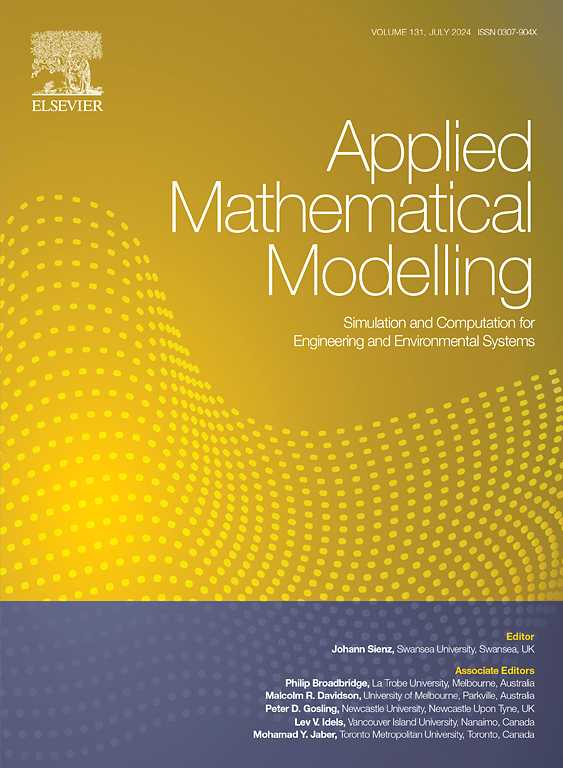Control switch layout-design for active structural acoustic control of piezoelectric curved shell structures in shallow sea
IF 4.4
2区 工程技术
Q1 ENGINEERING, MULTIDISCIPLINARY
引用次数: 0
Abstract
Existing acoustic topology optimization methods integrate the traditional finite element method-boundary element method (FEM-BEM) to optimize the layout of piezoelectric structure in free space, thereby improving the performance of active structural acoustic control (ASAC). Unfortunately, the inability of the traditional finite element method-boundary element method to deal with the reflected sound from waveguide boundaries limits their application in the optimization design of piezoelectric structures submerged in shallow seas. In addition, previous piezoelectric structure layouts designed for specific working conditions cannot realize online control of acoustic radiation for diverse working conditions in engineering practice. Therefore, a novel topological layout-design scheme for control switches of piezoelectric curved shell structures to bring down acoustic radiation in a shallow sea is proposed based on the velocity feedback control scheme and the combined method of the FEM, the added mass method (AM) and the image method-based boundary element method (I-BEM), which can handle the fluid-structure interaction and boundary sound reflection problems. A finite element formulation for the piezoelectric curved shell element is presented. In this context, the sensitivity analysis equation for sound pressure level is derived. The optimization problem is formulated in the framework of an artificial active damping model with penalization. The volumetric densities describing the control switch distribution are assigned as the design variables. Numerical examples demonstrate the validity of the proposed optimization approach and its potential applications in practical designs.
求助全文
约1分钟内获得全文
求助全文
来源期刊

Applied Mathematical Modelling
数学-工程:综合
CiteScore
9.80
自引率
8.00%
发文量
508
审稿时长
43 days
期刊介绍:
Applied Mathematical Modelling focuses on research related to the mathematical modelling of engineering and environmental processes, manufacturing, and industrial systems. A significant emerging area of research activity involves multiphysics processes, and contributions in this area are particularly encouraged.
This influential publication covers a wide spectrum of subjects including heat transfer, fluid mechanics, CFD, and transport phenomena; solid mechanics and mechanics of metals; electromagnets and MHD; reliability modelling and system optimization; finite volume, finite element, and boundary element procedures; modelling of inventory, industrial, manufacturing and logistics systems for viable decision making; civil engineering systems and structures; mineral and energy resources; relevant software engineering issues associated with CAD and CAE; and materials and metallurgical engineering.
Applied Mathematical Modelling is primarily interested in papers developing increased insights into real-world problems through novel mathematical modelling, novel applications or a combination of these. Papers employing existing numerical techniques must demonstrate sufficient novelty in the solution of practical problems. Papers on fuzzy logic in decision-making or purely financial mathematics are normally not considered. Research on fractional differential equations, bifurcation, and numerical methods needs to include practical examples. Population dynamics must solve realistic scenarios. Papers in the area of logistics and business modelling should demonstrate meaningful managerial insight. Submissions with no real-world application will not be considered.
 求助内容:
求助内容: 应助结果提醒方式:
应助结果提醒方式:


